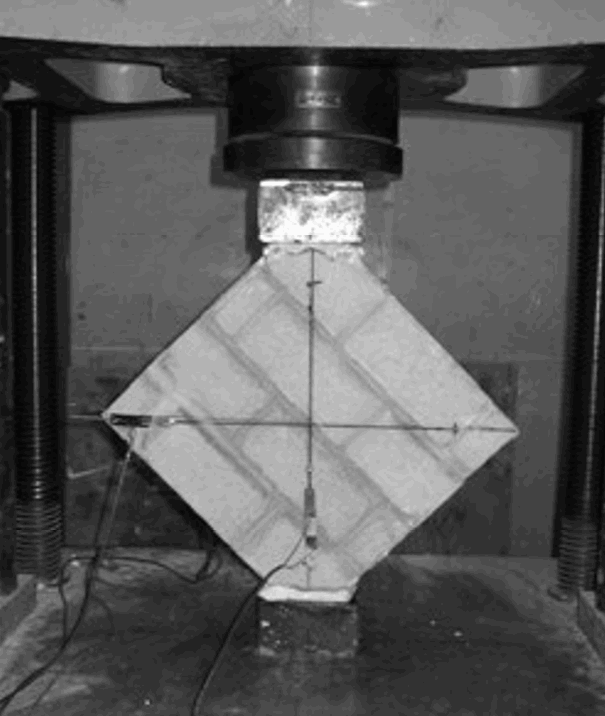Larisa Long1, Ahmad A. Hamid2, and Robert G. Drysdale3
- A.Sc. candidate, McMaster University, Hamilton, ON.
- Professor and Director of the Masonry Research Lab, Drexel University, Philadelphia, PA. Adjunct Professor and member of the Centre for Effective Design of Structures, McMaster University, Hamilton, ON.
- Professor and Martini, Mascarin and George Chair in Masonry Design, McMaster University, Hamilton, ON.
ABSTRACT
Physical and economic limitations can make laboratory testing of full-scale masonry wall subsystems and buildings unfeasible, particularly for dynamic loading. Small-scale modelling may be used to predict behaviour of these structures. This paper presents the results of preliminary testing of half-scale concrete masonry units for modelling in-plane behaviour of masonry shear walls. Material properties and behaviour of half-scale and full-scale masonry units and assemblages are examined. Strength, stress-strain characteristics, and failure modes of assemblages in axial compression and diagonal tension are compared and discussed. Half-scale masonry is found to behave as a good model of full-scale masonry, particularly for grouted specimens. Strength and stress-strain curves are comparable. The differences encountered are attributable to size effects, normal variation of masonry properties, and differences in block strength. These results support the feasibility of modelling full-scale masonry shear walls and buildings using half-scale units.
KEYWORDS: concrete masonry, small-scale modelling, prisms, wallettes, testing
4b-4



